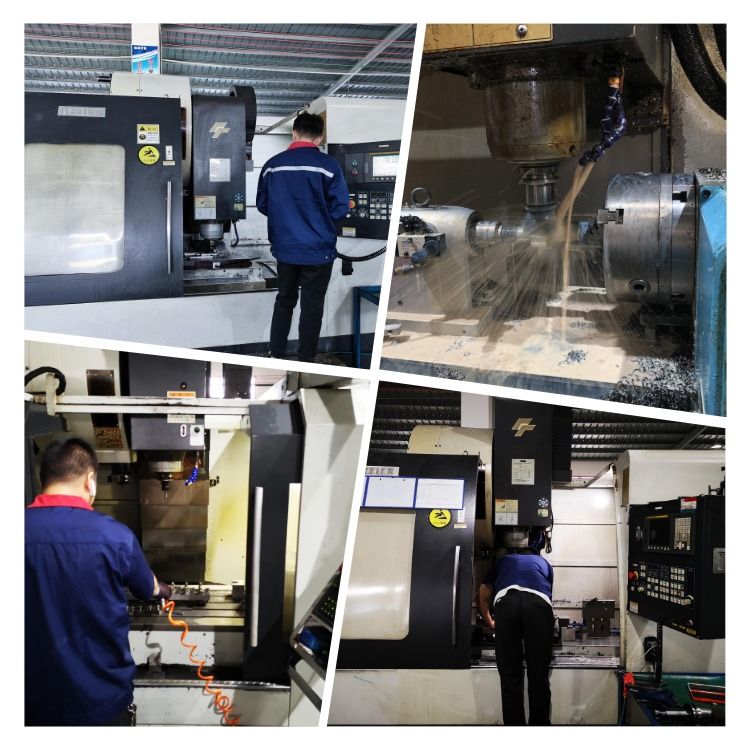
With the rapid development of economy in our country, CNC machine tools as a new generation of machine tools have been widely used in machinery manufacturing. With the rapid development of precision machining technology and the precision of machining parts, the precision of CNC machine tools is also higher Request. Although the user in the purchase of CNC machine tools, are highly valued machine tool position accuracy, especially the positioning accuracy of each axis and repeat positioning accuracy. However, the accuracy of these CNC machine tools in the end how? A large number of statistical data show that: 65.7% of the new machine, the installation does not meet its technical indicators; 90% of the CNC machine in use is in the wrong state. Therefore, it is very necessary to monitor the working status of the machine tool and test the machine accuracy frequently, in order to find and solve the problem in time and improve the machining accuracy of the part.

At present, CNC machine tool position accuracy test usually adopts the international standard ISO230-2 or the national standard GB10931-89 and so on. The same machine, due to the use of different standards, the resulting position accuracy is not the same, so choose the accuracy of CNC machine tools, we must also pay attention to the standards it uses. CNC machine tool position usually refers to the numerical control axis of the reverse bias and positioning accuracy. For both the determination and compensation is to improve the processing accuracy of the necessary ways.
First, the reverse bias
On CNC machine tools, due to the reverse dead zone of the driving components (such as servo motor, servo hydraulic motor and stepper motor) on the transmission chain of each coordinate axis, the backlash of each mechanical motion transmission pair and other errors exist, Resulting in each axis in the reverse motion from forward to reverse when the formation of reverse bias, usually also known as the backlash or loss. For semi-closed-loop servo system of CNC machine tools, the existence of reverse bias will affect the machine's positioning accuracy and repeat positioning accuracy, thus affecting the product's machining accuracy. Such as G01 cutting movement, the reverse bias will affect the accuracy of interpolation motion, if the deviation is too large will result in "circle is not enough round, square enough square" situation; and G00 rapid positioning movement, the reverse bias affect the machine tool The positioning accuracy, making drilling, boring and other hole processing hole position accuracy decreases. At the same time, with the increase of equipment running time, the reverse deviation will increase with the gradual increase of clearance due to wear. Therefore, it is necessary to periodically measure and compensate the reverse deviation of the machine axes.
Determination of reverse bias
Reverse bias measurement method: In the measured axis of the stroke, the forward or reverse movement in advance a distance and the stop position as a benchmark, and then in the same direction to give a certain movement command value, make it move a distance, Then move the same distance in the opposite direction and measure the difference between the stop position and the reference position. A plurality of measurements (usually seven times) are performed at three points near the middle and two ends of the stroke, respectively, and the average value at each position is determined. The maximum value among the obtained average values is the measured value of the reverse bias. In the measurement must first move a distance, or can not get the correct value of the reverse bias.
When measuring the reverse deviation of a linear axis of motion, the measuring instrument usually has a dial indicator or dial indicator. If conditions permit, a dual-frequency laser interferometer may be used for the measurement. When using dial indicator or dial indicator for measurement, it should be noted that the table seat and the rod should not extend too long too long, because the measurement of the cantilever longer, the table seat is subject to force to move, resulting in inaccurate count, Compensation value is not real. If you use programming to achieve the measurement, you can make the measurement process more convenient and accurate.
For example, measuring the reverse deviation of the X-axis on a three-coordinate vertical machine, first press the gauge against the cylindrical surface of the spindle and then run the following program to measure:
N10 G91 G01 X50 F1000; table to move to the right
N20 X-50; Work table left, eliminating the transmission gap
N30 G04 X5; Pause for viewing
N40 Z50; Z-axis lift open
N50 X-50: workbench to the left
N60 X50: table right shift reset
N70 Z-50: Z axis reset
N80 G04 X5: Pause for observation
N90 M99;
It should be noted that the results measured at different speeds of the workbench will be different. Under normal circumstances, the measured value of low-speed than the high-speed large, especially in the machine shaft load and exercise resistance when larger. Low-speed movement table speed is low, not prone to overshoot (relative to the "backlash"), so the measured value is larger; at high speed, because the table speed is high, overshoot prone to overshoot, Measured value is small.
The method of measuring the amount of reverse deviation of the rotary axis is the same as that of the linear axis except that the instrument used for the test is different.
Reverse bias compensation
Domestic CNC machine tools, positioning accuracy, there are many> 0.02mm, but no compensation function. For such machine tools, in some occasions, one-way positioning can be realized by programming, and the backlash can be cleared. Under the condition of constant mechanical part, once the low-speed one-way positioning reaches the interpolation starting point and then the interpolation process . When the counterfeit feed encounters the reverse direction, the value of the backlash is formally interpolated to improve the accuracy of the interpolation machining. Basically, the tolerance of the part can be guaranteed.
For other types of CNC machine tools, there are usually a number of addresses in the NC memory dedicated to storing the backlash values for each axis. When a certain axis of the machine is commanded to change the direction of movement, the numerical control device will automatically read the reverse clearance value of this axis, compensate and correct the coordinate displacement command value, so that the machine tool will be accurately positioned on the command position, eliminate or reduce Adverse effects of small reverse deviations on machine accuracy.
General numerical control system only a single backlash compensation available, in order to balance high and low speed of motion accuracy, in addition to do a better job outside the machinery, only the rapid movement of the measured value of the reverse bias as a Compensation value input, it is difficult to achieve balance, taking into account the rapid positioning accuracy and cutting interpolation accuracy.
For CNC systems such as FANUC0i and FANUC18i, two kinds of backlash compensation are available for fast motion (G00) and low-speed cutting feed motion (G01). According to the different feeding mode, the numerical control system automatically chooses to use different compensation values to complete the machining with higher precision.
Enter the value of the backlash G0 measured by cutting feed A Input parameter NO11851 (The test speed of G01 can be determined according to the common cutting feedrate and machine characteristics), input the value of backlash G00 measured by G00 into parameter NO11852 . It should be noted that if the NC system performs the specified backlash compensation separately, the fourth bit (RBK) of parameter number 1800 should be set to 1; if RBK is set to 0, the specified reverse direction Clearance compensation. G02, G03, JOG and G01 use the same compensation value.
Second, positioning accuracy
CNC machine tool positioning accuracy refers to the measured machine tool moving parts in CNC system can achieve the movement of the position accuracy is different from ordinary CNC machine tools an important precision machine tool, which together with the geometric accuracy of the machine tool cutting Accuracy has an important effect, in particular, on the pitch error in the hole machining has a decisive impact. A CNC machine tool can determine its machining accuracy from the positioning accuracy it can reach, so the detection and compensation of the CNC machine tool's positioning accuracy is the necessary way to ensure the machining quality.

Copyright © Tianhui Machinery Co.,Ltd All Rights Reserved Website Map XML